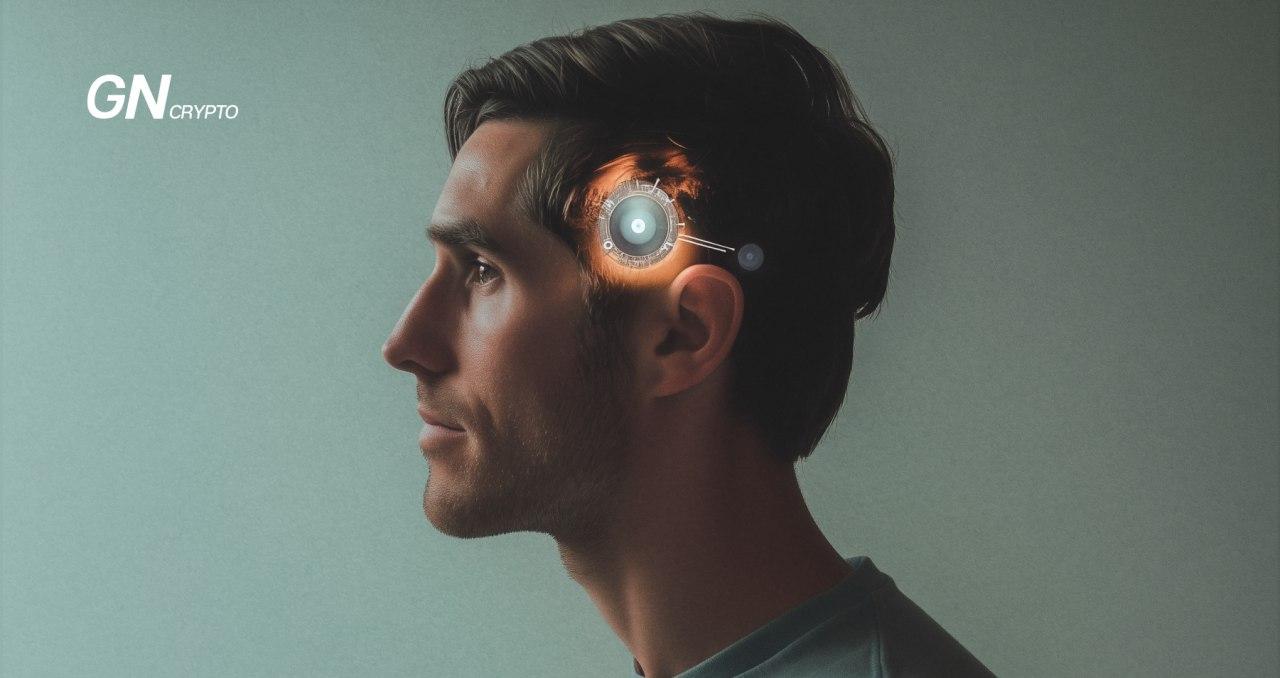Clinical Trials and the Progress of Brain-Computer Interfaces

What if human superpowers became a common reality? With the technology called Brain-Computer Interfaces (BCIs), controlling objects with thoughts and enhancing brain capabilities seem possible.
Brain-computer interface is a technology that allows people to interact with devices like computers and robotic limbs using brain signals. According to the World Economic Forum:
The first experiments with BCIs involved wearable devices, such as caps or headsets placed on the scalp to measure brain activity. Over time, with the integration of advanced sensors and algorithms, wearable BCIs have become widely used in healthcare for diagnosing neurological disorders, including epilepsy, Parkinson's disease, and sleep disorders.

Although early trials showed that brain implants could effectively record neural activity and allow patients to control devices, the technology had limitations in flexibility and long-term usability.
The first trials opened the door to extensive research and experiments aimed at improving BCI technologies for optimized mind-machine communication.
Neuralink has been a leader in BCI technology development due to its advanced technology. The company has created a wireless device the size of a coin, with thin electrodes implanted into the brain by a specialized robot. Neuralink started experiments by conducting tests on animals. One of the company’s successful trials was the 2021 experiment where Pager the Monkey played ping pong using only brain signals.
In May 2023, the US Food and Drug Administration approved Neuralink’s request for human clinical trials, and in 2024, the company implanted two chips in patients' brains. According to Elon Musk, Neuralink plans to conduct eight more trials by the end of the year.
Neuralink’s first patient, Noland Arbaugh, who is paralyzed from the shoulders down, received an implant in January 2024. In a live stream video on X in May, Noland showed how he played chess and controlled a cursor through his thoughts.

In the coming years, Neuralink will continue to work on solving neurological issues, with the long-term goal of enhancing the brain’s capabilities by closely integrating AI with the human brain.


BCI applications translate brain activity into control signals for devices and provide sensory feedback to stimulate the brain.
The connection between the mind and technology can be the key to overcoming disability and increasing brain capabilities, such as improving memory, speeding up information processing capabilities, and helping people deal with chronic pain conditions. Currently, BCIs and their various applications are still in the experimental stage.
From Initial Research to Wearable BCIs, Implants and Clinical Trials
The human brain is one of the most complex structures in the world. Studies have found that there are around 86 billion neurons in the brain, forming approximately 100 trillion connections with each other. The brain and its capabilities have been central topics in medical research and neuroscience. Since the late 1960s, scientists have been experimenting with BCIs and brain recording techniques to determine how neurological activity could be used to control external devices. There are two main ways BCIs can connect the brain to external devices: through implants and wearable devices.
The first experiments with BCIs involved wearable devices, such as caps or headsets placed on the scalp to measure brain activity. Over time, with the integration of advanced sensors and algorithms, wearable BCIs have become widely used in healthcare for diagnosing neurological disorders, including epilepsy, Parkinson's disease, and sleep disorders.

Components of a typical BCI system. Source: National Center for Biotechnology Information
Experiments with brain implants started in the 1970s with the first tests performed on monkeys. In the late 1990s, thanks to developments in neuroscience and computing, BCI research took a new turn, and the first attempts involving humans took place. In 1998, neurologist Philip Kennedy implemented the first BCI into a human with paralysis. After several months of training, the patient was able to control a computer cursor by thinking. However, he faced complications, including infection and difficulties with the implant’s integration with brain tissue, which led to the removal of the device.
Although early trials showed that brain implants could effectively record neural activity and allow patients to control devices, the technology had limitations in flexibility and long-term usability.
The first trials opened the door to extensive research and experiments aimed at improving BCI technologies for optimized mind-machine communication.
Recent Developments in the BCI Sector Driven by Neuroscience, AI, and Other Technologies
Since the 2020s, BCI systems have increasingly used AI algorithms to analyze and decode brain signals, recognize patterns and provide sensory feedback. At the same time, progress in fields such as brain function research, the development of durable and flexible materials, and wireless technology have been a driving force for breakthrough applications and studies. Further, we list some achievements in the field that seem quite unreal.
Elon Musk’s Neuralink Keeps Performing Human Clinical Trials
Elon Musk founded Neuralink in 2016 together with a team of experts in neuroscience, biochemistry, and robotics. According to the official website, Neuralink’s mission is to create a BCI to restore autonomy for people with unmet medical needs today and unlock human potential tomorrow.
Neuralink has been a leader in BCI technology development due to its advanced technology. The company has created a wireless device the size of a coin, with thin electrodes implanted into the brain by a specialized robot. Neuralink started experiments by conducting tests on animals. One of the company’s successful trials was the 2021 experiment where Pager the Monkey played ping pong using only brain signals.
In May 2023, the US Food and Drug Administration approved Neuralink’s request for human clinical trials, and in 2024, the company implanted two chips in patients' brains. According to Elon Musk, Neuralink plans to conduct eight more trials by the end of the year.
Neuralink’s first patient, Noland Arbaugh, who is paralyzed from the shoulders down, received an implant in January 2024. In a live stream video on X in May, Noland showed how he played chess and controlled a cursor through his thoughts.

Noland Arbaugh. Source: WSJ Business News/X.com
Noland said that the implant allows him to perform tasks like playing video games and texting, which he was unable to do before. However, not everything was perfect initially, and there were some issues related to the electrodes' placement. According to Noland, Neuralink experts are working on fixing these issues through software adjustments.
In the coming years, Neuralink will continue to work on solving neurological issues, with the long-term goal of enhancing the brain’s capabilities by closely integrating AI with the human brain.
Synchron’s Device Allows People to Control Apple Vision Pro With Their Thoughts
On July 30, 2024, the neurotech company Synchron announced connecting its brain implant with the Apple Vision Pro headset to allow people with limited capabilities to control the device without using their hands or voice. Synchron was founded in 2012 and is among the pioneers in the BCI sector. With their new solution, the company aims to make the newest technologies equally accessible. According to CNBC, the first person who used the VR headset via a brain implant is 64-year-old Mark, who prefers to keep his last name private. Synchron’s patient has a disease called amyotrophic lateral sclerosis (ALS), which caused him to lose function in his upper limbs. Synchron's BCI is inserted through the jugular vein and placed in a blood vessel near the brain's motor cortex. It's linked to an antenna under the chest skin, which sends brain data to external devices.

The patient uses Apple Vision Pro via a brain implant. Source: CNBC/X
Mark told CNBC that he’s been testing the Vision Pro since April, and can use it to send texts, watch TV and play solitaire. He added that some apps within the headset are more challenging than others and he continues to experiment with new ways to use it.
Wearable BCIs Are Making Progress
Wearable brain devices are getting easier to use due to their flexibility, lightweight structure, and multifunctionality. In March 2024, researchers at the University of Texas Austin announced they have created a BCI cap allowing users with motor disabilities to turn their thoughts into actions without the need for surgery. Using machine learning algorithms, the BCI can be trained on data about the user to meet their needs. This approach simplifies the personalization of the cap. To start using the BCI, a person needs to wear the cap, which has multiple electrodes placed on it. From then on, the electrodes will send neural activity to the research team, who will decode the received signals through software.

Researchers at the University of Texas Austin testing wearable BCI cap. Source: UT News
How BCI Technologies Are Changing the World
Although BCI is not a new concept, the pace of experiments and technology advancements today is accelerating fast. However, there are still some concerns around the technology, one of which is the long-term impact of an implant on the brain. The possible consequences are not fully understood yet, while surgeries involve risks related to electrode degradation and tissue damage. As a result, it can be challenging for companies to receive regulatory approval for conducting trials. Another issue is data privacy and safety, as BCIs collect signals and data from patients’ brains.
Taking into account the challenges, it’s still undeniable that BCIs are changing the world. Already today, technology in its different forms is changing lives, enabling more accurate diagnosis and allowing people with disabilities to control devices with their thoughts. BCIs are set to change the interaction between humans and machines and simplify brain research. In the future, the devices are expected to achieve wider use and create new applications, such as driving vehicles through brain signals, improving memory, and powering faster communication. It may even be possible to merge AI with the brain and enhance cognitive abilities. AI/brain integration is a topic of scientific research and is also a key component of Neuralink’s long-term strategy.
Previously, Elon Musk said:
Ultimately, we will achieve symbiosis with artificial intelligence. This is not a mandatory thing. This is a thing you can choose to have if you want. This is something that I think will be really important on a civilization-level scale.


